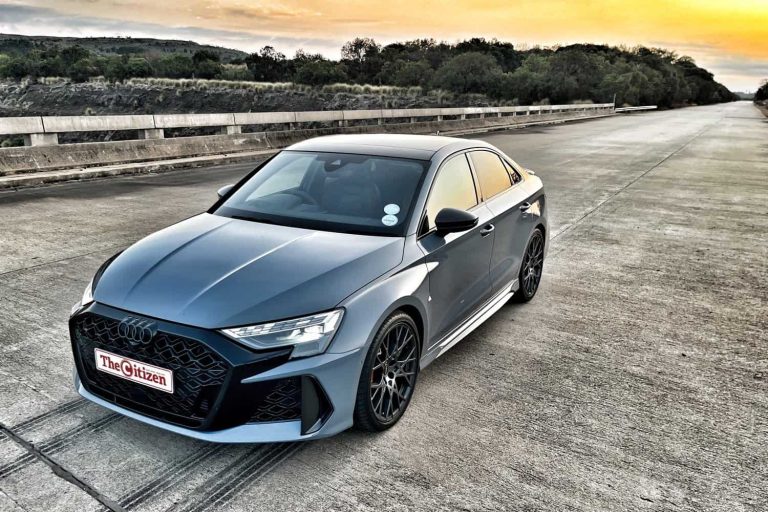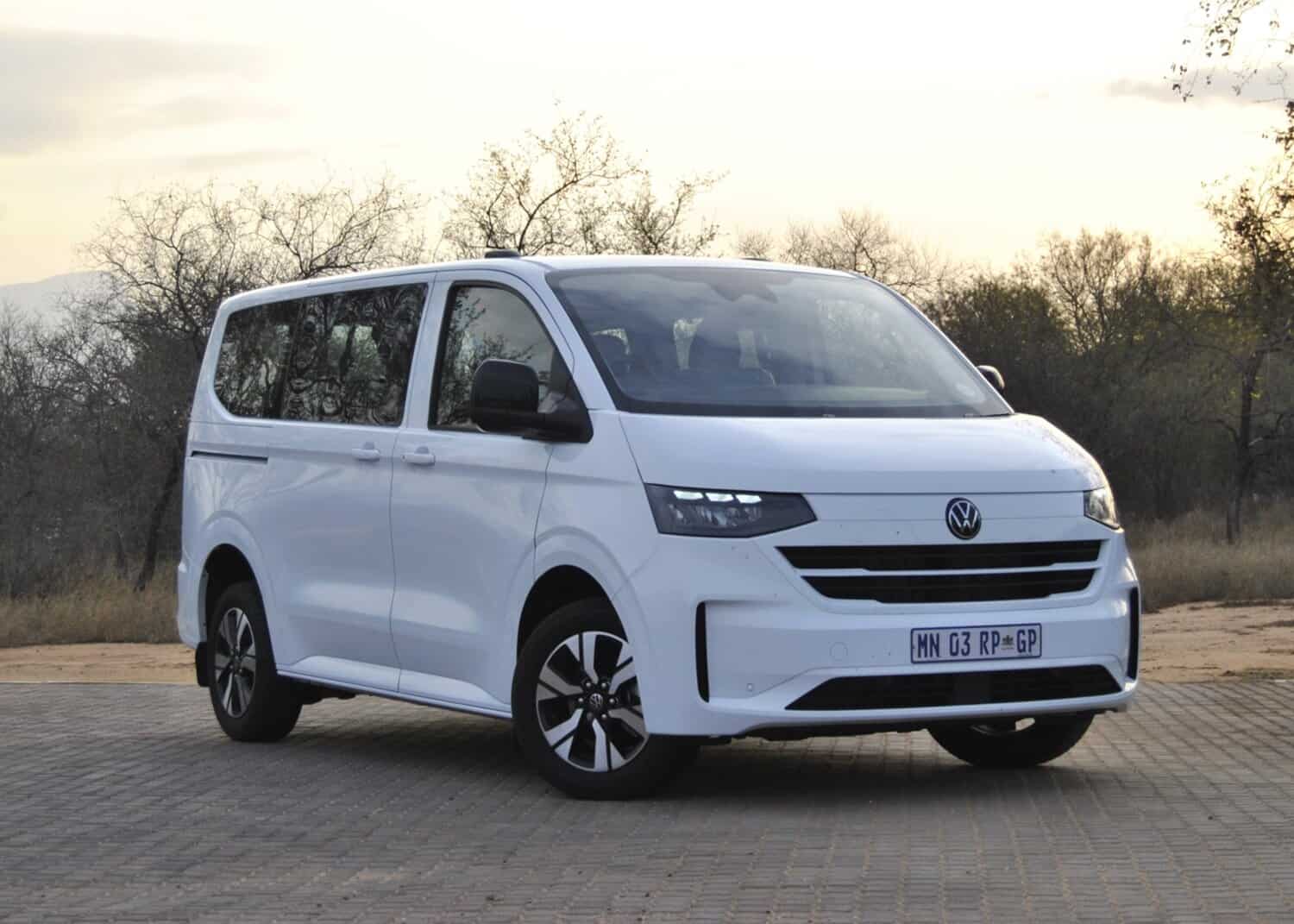
The history of the Volkswagen Transporter is a well-documented one that goes back to 1946 when Dutch Volkswagen importer, Ben Pon, noticed a strange Beetle-based flat body transporter moving parts in the automaker’s then newly reconstructed Wolfsburg plant.
Called the Plattenwagen or “flat-wagon” when directly translated, the proverbial lightbulb moment then arose and in 1950, the very first Transporter saw the light of day as the second “volks-wagen” after the Beetle.
75 years of hard work
Known as the Type 2 in accordance with the Beetle being known as the Type 1, the Transporter has become a seminal model for Volkswagen that celebrates its 75th anniversary this year.
NOW READ: Volkswagen teases 222 kW Amarok and prices new Transporter
Sold over seven generations, the Transporter holds a sentimental space in South Africa where production ran from 1955 to 2002 at the Kariega, then Uitenhage, plant across three of the seven iterations.
Joint venture
Imported from the plant in Hanover since the T4, the latest generation Transporter, arguably, represents the biggest change since the former that switched from a rear engine to a front engine configuration.
Similar to the Amarok, the Transporter forms part of a joint venture with Ford as it is based on the Transit/Toureno Custom, and made at the Blue Oval’s Kocaeli plant in Turkey.
Consequently, it doesn’t form part of the T-series and isn’t called T7 but simply only Transporter – this being as a result of the “real” T7 or Multivan that is being lined-up for introduction into the local market next year.
Officially shown at the Kyalami Festival of Motoring in August alongside the newly priced 222 kW Amarok, the official launch of the Transporter involved a marathon road trip in typical Transporter or Kombi fashion through the Mpumalanga lowlands all the way to Hoedspruit in Limpopo.
Line-up
Announced for South Africa at its annual product Indaba in February, six months after its global reveal, the Transporter, initially, offers three bodystyles: a long wheelbase panel van, the van and passenger combination Crew Bus and the people-carrying short wheelbase Kombi in Commerce, Life, Edition and Style trim grades.
Debuting next year is the dropside double cab, however, a Caravelle won’t be offered. Instead, it will be reserved for the T7, leaving the Style as the flagship Transporter derivative.
Seating eight as standard, the Kombi was the main focus of the launch in Life and Edition guises, powered by the 125 kW version of the same single turbo 2.0-litre Panther diesel engine used in the Transit Custom Sport and upscale Sport and Titanium X versions of the Tourneo Custom.
In total, the engine comes in three states of tune; 81kW/310Nm, 110kW/360Nm and the mentioned 125 kW that outputs 390 Nm.
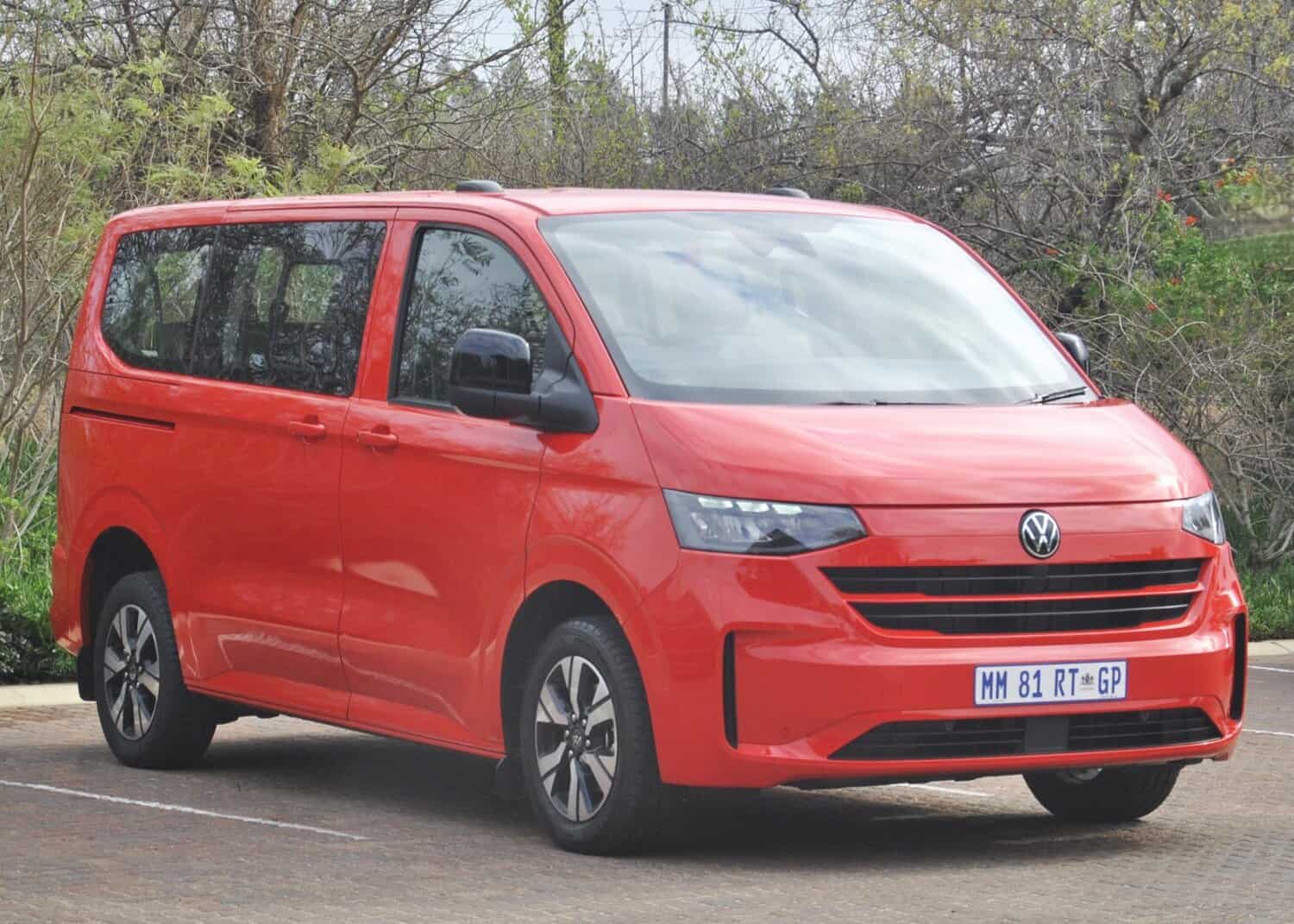
For the moment, the former unit is reserved solely for the panel van connected to a six-speed manual gearbox. An eight-speed automatic will be added later.
Still to be detailed, the Crew Bus is expected to offer the former pair of engines and transmissions, plus the 4Motion all-wheel drive system in combination with the 110 kW engine and automatic ‘box.
In the case of the Kombi, the 125 kW is standard across the entire six-model range, as is the eight-speed ‘box developed by Ford and not used on any other global Blue Oval model.
Unlike the Tourneo, the Transporter Kombi will have the option of all-wheel drive, but only on the Style that arrives later this month.
Volkswagen styling
As mentioned, the extended road trip of near-on 1 000 km showed the Transporter’s still intact long haul ability as a proper “kombi”, but also limitations noted on the launch of the Tourneo Custom Sport and Titanium X in Durban two months ago.
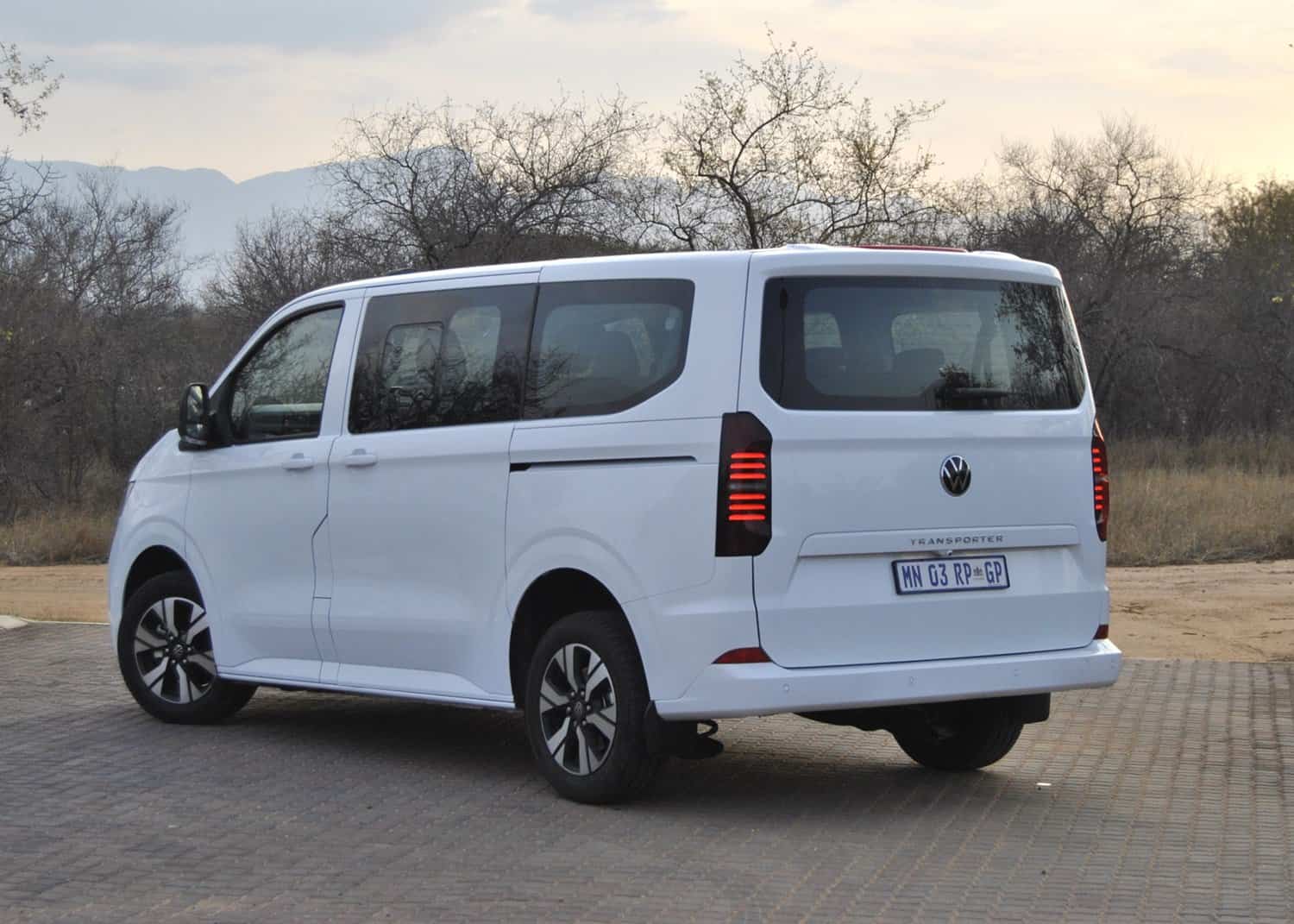
Stylistically, the Transporter incorporates Volkswagen’s current family face comprising a different bumper and grille from the Ford, standard LED headlights across all variants and bodystyles, inverted L-shaped air inlets on the bumper and a wider lower air intake.
At the rear, the changes are more minimal and restricted to LED lights with a different internal graphic, a chrome Transporter badge spread out below the numberplate cavity and the option of either the standard flip-up tailgate or barn-style doors.
Dimensions
Compared to the outgoing T6.1, the Transporter gains on all the dimensional fronts; a 146 mm increase in wheelbase to 5 050 mm, an overall height of 1 999 mm and a wheelbase stretch of 97 mm to 3 100 mm.
For the long wheelbase panel van, the length increases further to 5 450 mm and the wheelbase to 3 500 mm. The claimed payload is 1 326 kg, cargo volume 5.8 m3 and the length of the cargo floor 3 002 mm.
Regardless, again, of bodystyle or model, the claimed tow rating for a braked trailer goes up by 300 kg to 2 800 kg.
Special Edition
Unveiled at Kyalami, the limited run Edition fills the gap between the Life and Style as largely an appearance package.
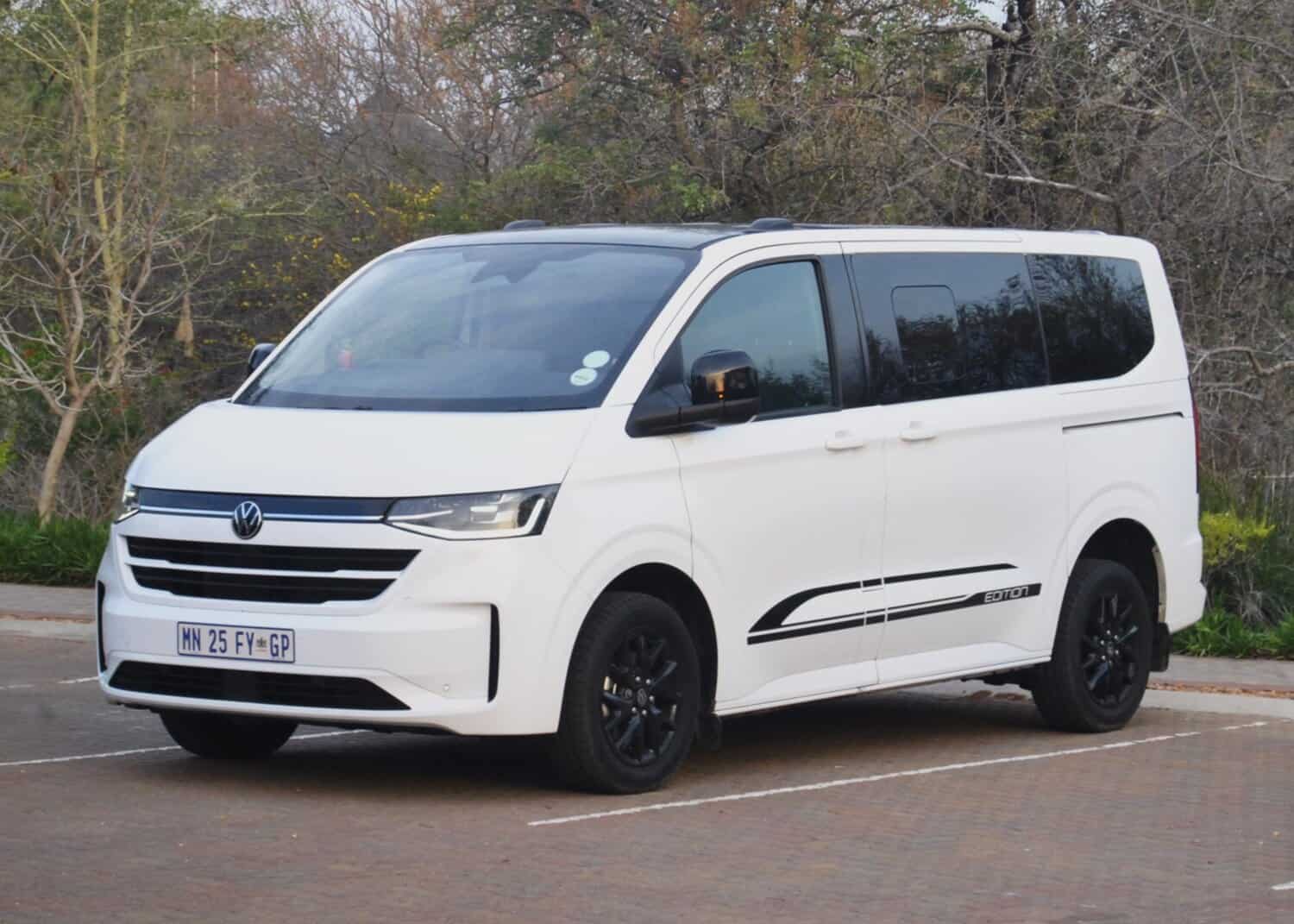
The unique fittings consist of the otherwise optional I.Q. LED headlights, a dual-tone black and body colour logo bar with a chrome strip, gloss black 17-inch Le Mans alloy wheels and Edition branded illuminated treadplates inside.
Rounding the additions off is a black B-pillar, a black roof and black finishes on the bumpers, tailgate and on the mirror caps.
Climbing aboard
Inside, and compared to the Tourneo, the Transporter retains the 13-inch infotainment display and the, actual, eight-inch digital instrument cluster.
Both do, however, receive graphics and readout bespoke to Volkswagen, the former sporting the same MIB4 software as the Golf 8.5, and with wireless Apple CarPlay and Android Auto.
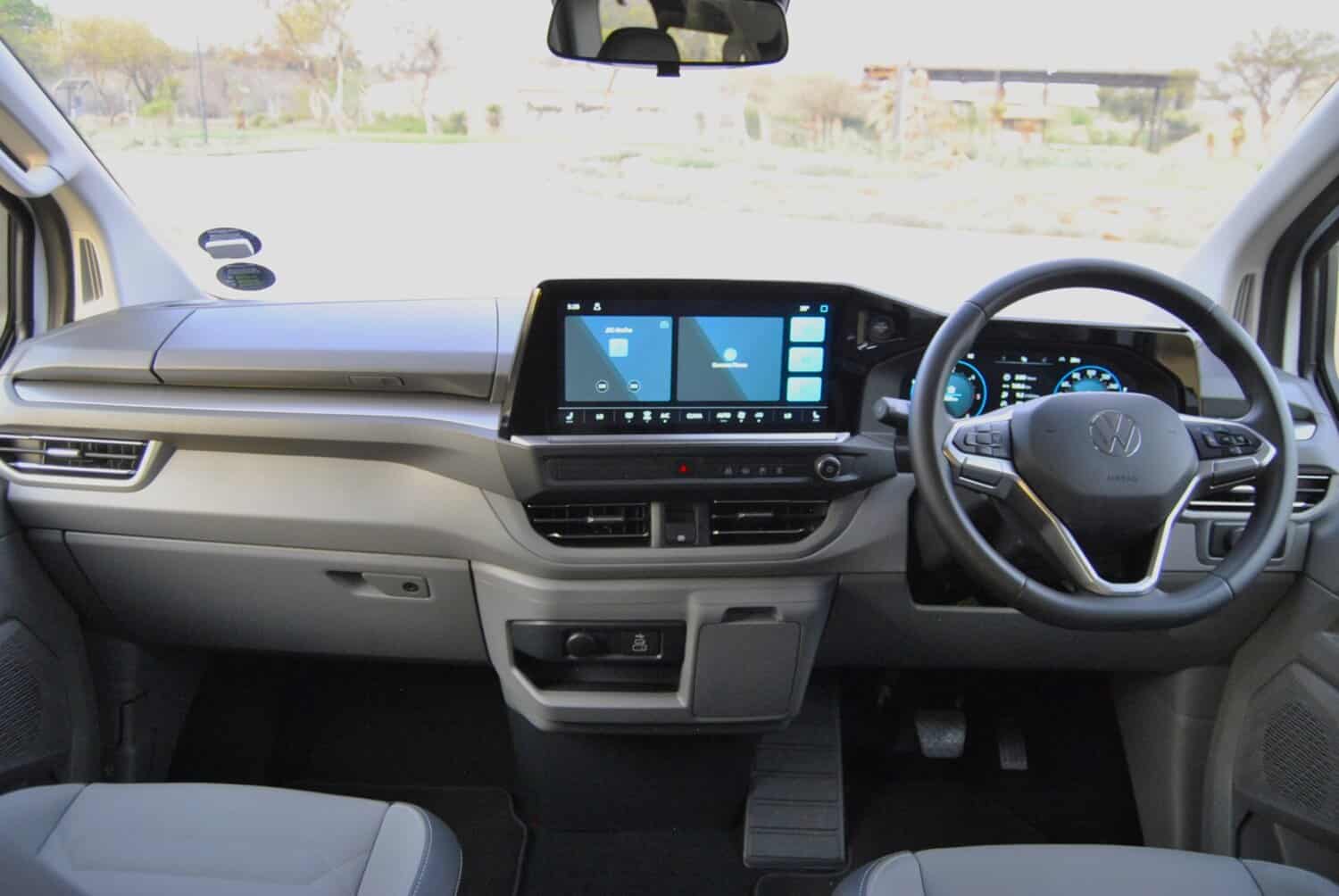
At the same time, the steering wheel – complete with physical buttons – is a Volkswagen part and not the quartic design as the Ford, while the dashboard’s lower section is of a flat design as opposed to the Transit/Tourneo Custom’s console layout housing a pair of cupholders.
The redesign means the wireless smartphone charger and pair of USB ports now sit to the right of the passenger rather than on the floor, and a single cupholder to the left of the driver.
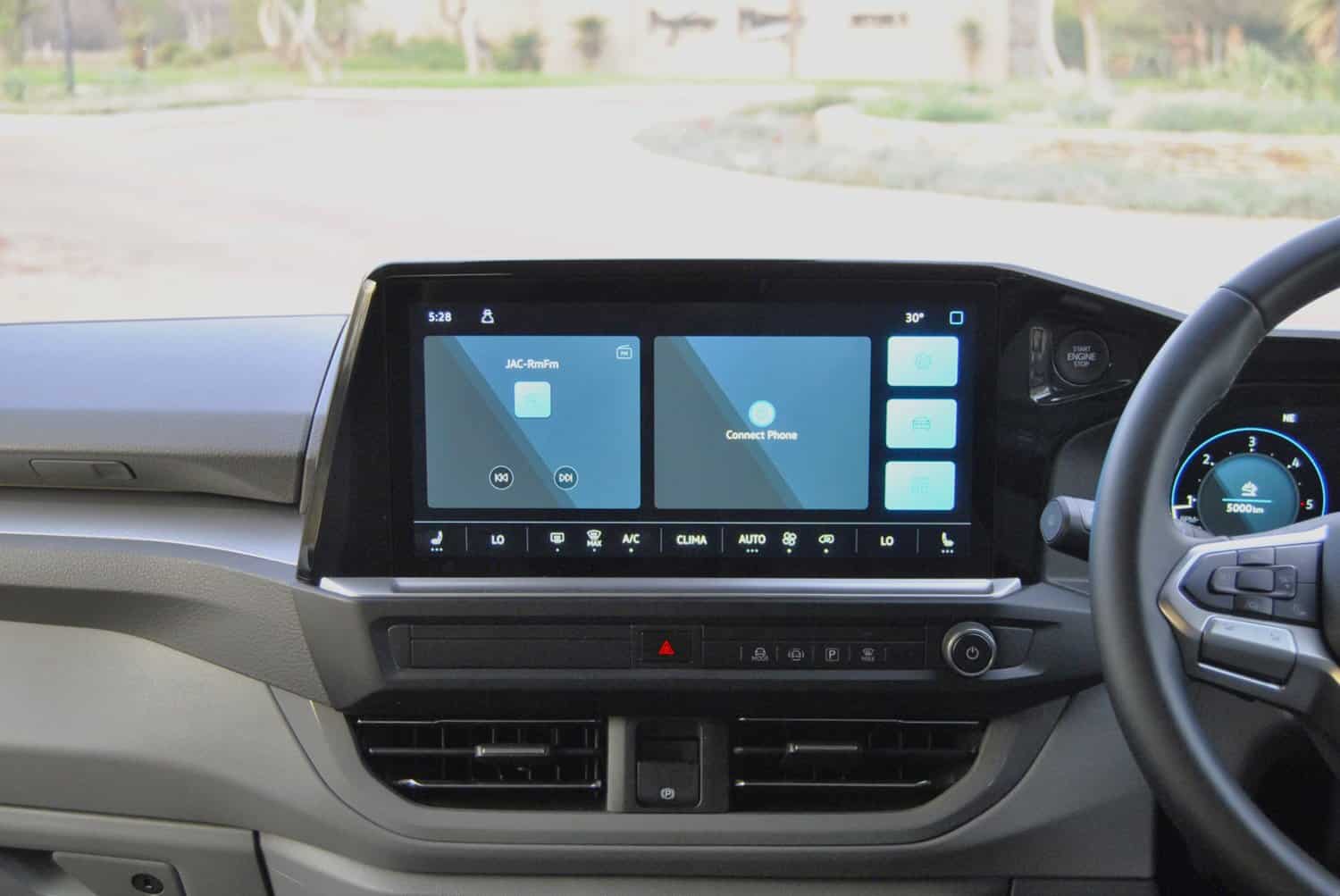
Kept are the ancillary touch-sensitive buttons and physical volume knob below the infotainment system, the button for the handbrake between the air vents and, on automatic models, the steering column-mounted lever.
Its second row still revolving to form a boardroom style layout, but now requiring the seat to be be moved manually before clipping back into the runners, the Transporter’s boot space rounds at 5 800-litres with both the second and third rows removed.
The drive
While access to the third row requires very little in the way of contortions by simply tugging one of the pulls that lifts the individual middle chairs up, the drive to Hoedspruit resulted in the same conclusion as the Tourneo Custom Sport; the Transporter feels undone on the powertrain front.
Offering the same drive modes, Slippery, Eco, Normal and Tow/Haul, but with a Sport setting included, the Transporter feels ponderous on the open road and the gearbox slow to respond, even in manual mode.
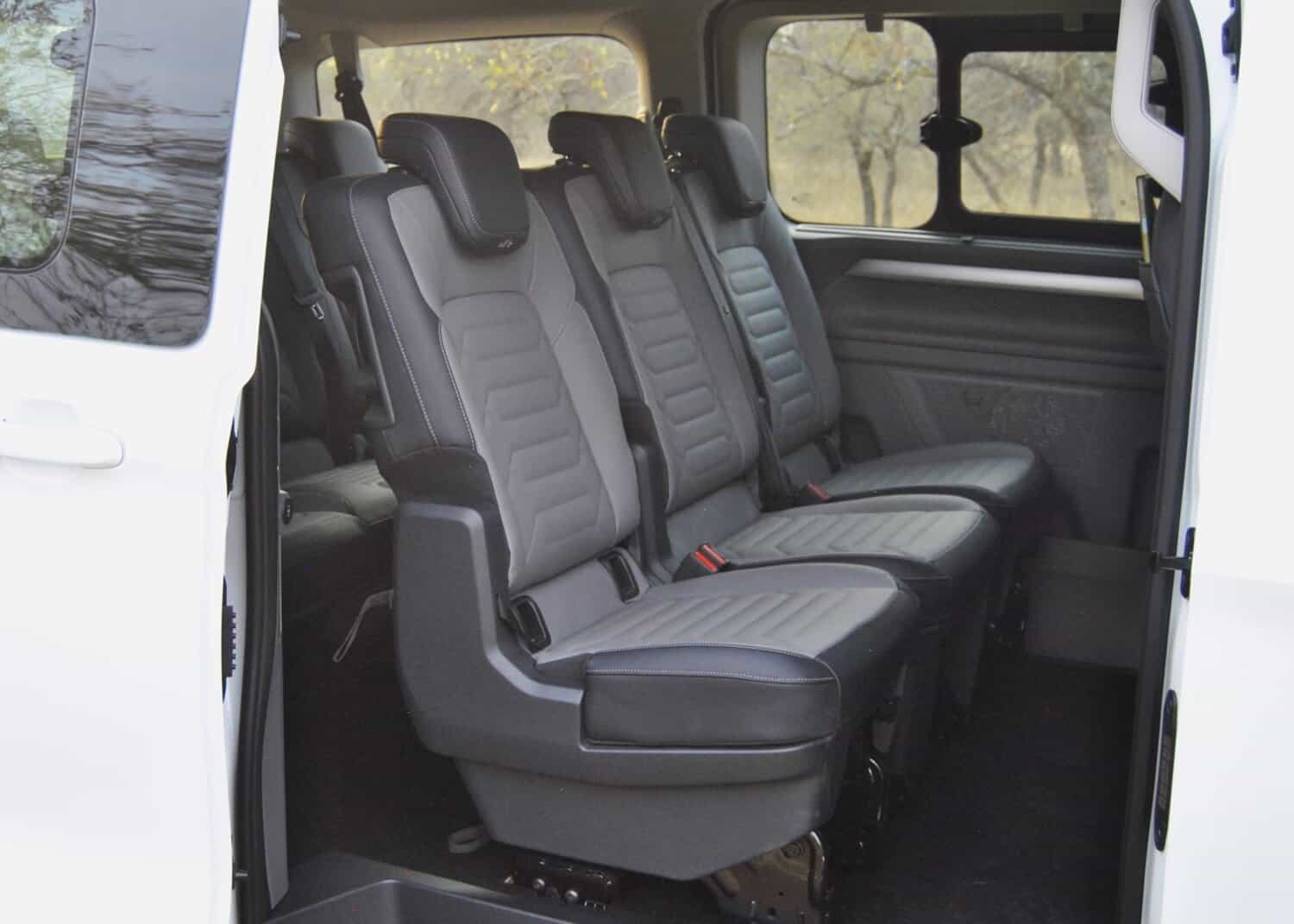
Overtaking manoeuvres required careful planning as, even in Sport mode, burying the throttle into the floor made no real difference to response.
What’s more, refinement is let down by too much noise filtering into the cabin, which often made it hard to hear a conversation when chatting to colleagues sitting in the second row.
Fit-and-finish also felt a notch down from the T6.1, though the steering is comparatively light, the manual but heated front seats comfortable, the number of storage areas without much to complain about, and window blinds standard on both the manually sliding side doors.
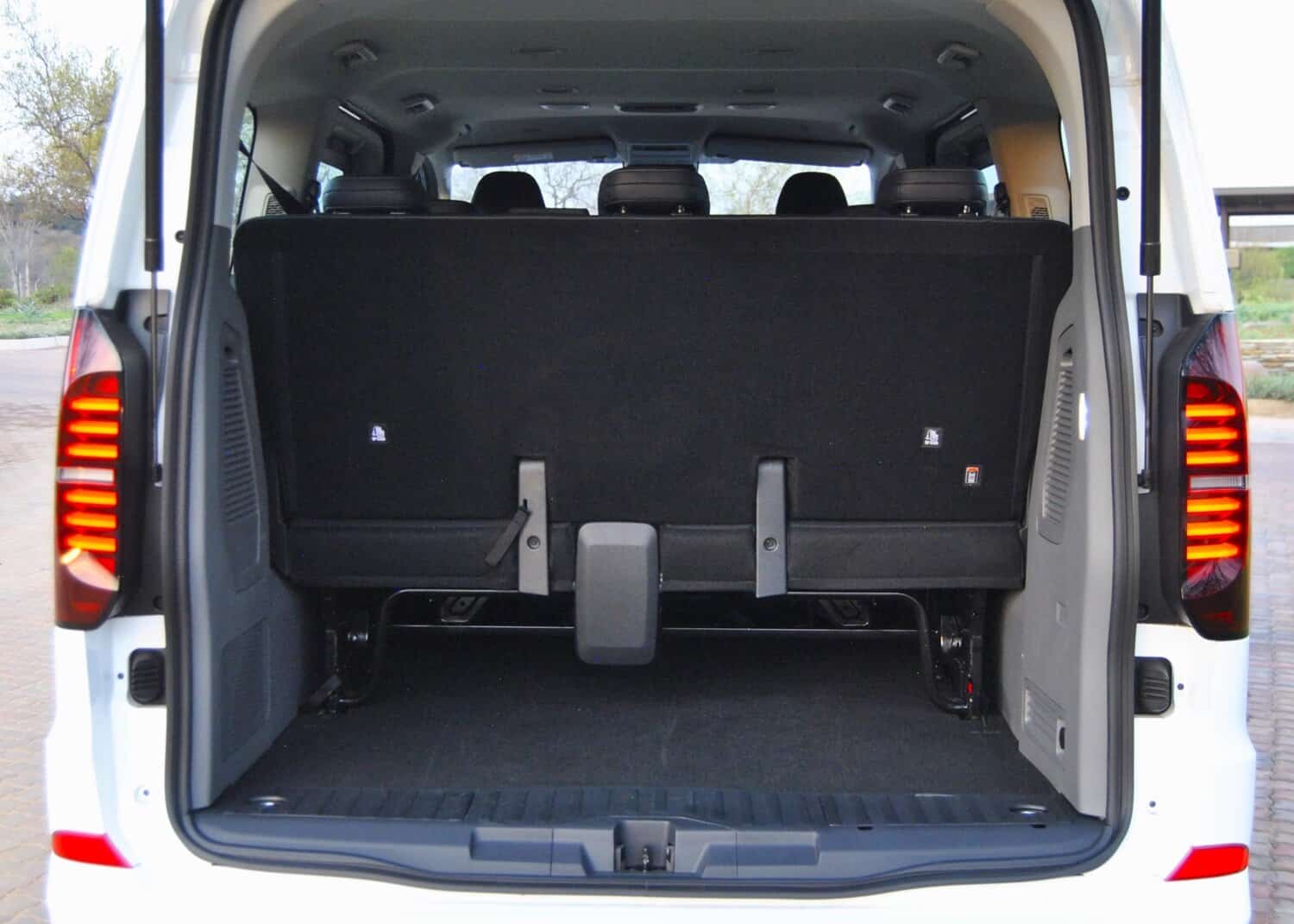
Less so, the ride teetered on the firm side, not helped by the condition of the roads around Graskop, Lydenburg and on the outskirts of Hoedspruit.
That being said, tyre pressures are largely believed to have played a part, given how smooth the Toureno Custom Titanium X.
Conclusion
As with the Amarok, the Volkswagen Transporter will be a contentious issue for no longer being a “real Volkswagen” but the result of a joint venture. In fact, this was a topic of discussion that never died down during the three-day launch.
However, while it will be a bitter pill for some to swallow for some, the price credit over the Ford could be the biggest game switcher, never mind the inclusion of a service plan Dearborn asks extra for.
Price
Included on the panel van and Crew Bus is a two-year/unlimited km warranty as well as a three-year/60 000 km service plan.
Standard on the Kombi is a three-year/120 000 km warranty and a five-year/60 000 km maintenance plan.
- Transporter 2.0 TDI 81 kW Panel Van – R770 000
- Kombi 2.0 TDI 125 kW Kombi – R1 081 700
- Kombi 2.0 TDI 125 kW Commerce AT – R1 055 200
- Kombi 2.0 TDI 125 kW Life AT – R1 116 845
- Kombi 2.0 TDI 125 kW Edition AT – R1 167 400
- Kombi 2.0 TDI 125 kW Style 4Motion AT – R1 301 400
ALSO READ: No more hiding as Volkswagen sheds new Transporter’s disguise
